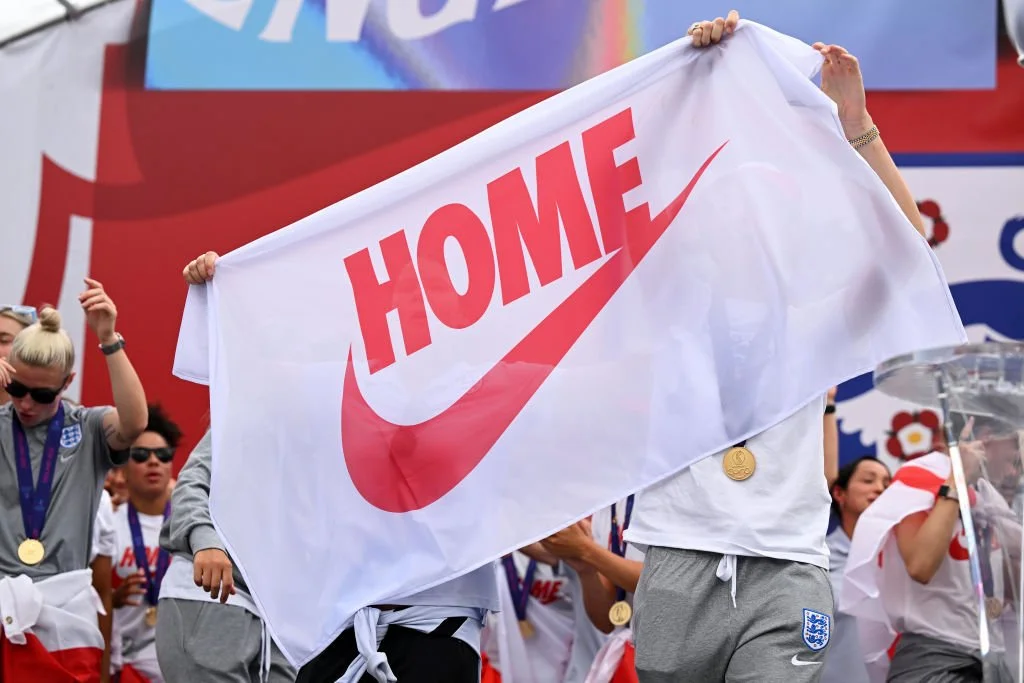The Summer of Women’s Football
Leave it to me to travel to the U.K. during one of the hottest stretches in recorded history. But I am here on a mission: I’m going to attend my first women’s football matches during the Women’s European Championship tournament of 2022.
The idea began to form into a plan back in the spring, when I started to noodle on traveling again, and friends in the U.K. mentioned how the tournament would be a good opportunity. Before now, I’d only been to one live match before - a friendly between my beloved Liverpool and Manchester City in New Jersey about four years ago which, fortunately, went my way in the end.
So I’ve taken a seven hour flight from New York to Heathrow, waited two hours for my luggage, then caught a train from Euston to Manchester and fallen immediately into bed. The second day of my trip is where the fun really begins. My friend Matt comes to Manchester Piccadilly to retrieve me - the wayward tourist that I am - and we journey together to Manchester City’s Academy campus to watch Italy play Iceland.
I owe a great deal of my passion for football to Matt. He’ll hate me for saying that - the grumpy Welshman - but I would not be on my way to this game without him (both literally and figuratively; I am useless with the tram). He has been extremely patient with me over the past few years, patiently answering my bizarre football questions that I’m beginning to think babies are born knowing the answer to on this side of the Atlantic. I remember one day I asked him the difference between throwing the ball in and taking a corner, and it may have temporarily broken him. But as we walk past the Etihad, I think he is reminded why he tolerates the novice questions of his Yankee friend: our childlike enthusiasm. Because let me tell you, I am buzzing.
I am denied a noisemaker, mostly because Matt claims I will weaponize it against him, but once we find our seats I cannot stop talking about everything. The weather is gorgeous and only encourages the positive atmosphere. Little girls with “Dottir” on the back of their oversized shirts run by in groups, laughing. Our seats are in a predominantly Italian section, just off to the side of one of the goals, and the fans around us sing loudly. Matt is in fine form, patiently pointing out formations, answering my questions, and even laughing at a few of my terrible jokes. The match’s attendance doesn’t even hit 5,000 fans, but when the Icelandic supporters perform their thunderclap, I am beside myself with glee. Both goals happen down our end of the pitch and regardless of which team scores it is impossible not to cheer. Perhaps it would be different if I was watching my own team, but to see the moment a goal is born, half a dozen touches back followed by a clean break, you can’t abstain from applauding the magic of it.
—
Two days later, I am in my seat at the Brentford Community Stadium on an equally gorgeous, though much hotter day. My companions this time are a couple, Meg and Steve, who have been equally patient and obliging on my football journey. They attended the opening of the tournament at Old Trafford and will be at Wembley for the final as well. Their enthusiasm for the women’s game is infectious and neither of them have much patience for the “othering” of it. We’re watching Denmark and Spain, a totally different experience from what Matt and I witnessed between Iceland and Italy, and therein lies the most important lesson I learned during this tournament about live football: that with every match, there is always a chance to learn something new.
“Not only am I excited about what is happening within the tournament and what I’ve seen, but I want her to understand that this is something that makes me feel like myself.”
Granted, with a season ticket you’ll always be viewing the pitch from the same seat, but getting to see the entire pitch, the entire stadium full of fans, means you’re seeing more than what the camera angle on TV is feeding you. Sitting just off one corner meant the wall Denmark put up against the Spanish offense looks akin to military tactics. And their fans are some of the most vocal, as one takes charge with a drum and a megaphone. After 90 scoreless minutes, the sound in the stadium when Spain finally find a breakthrough is chaotic - relief mixed with hysteria from 15,000 supporters knowing, at last, who from their group joins Germany in the quarterfinals.
During my stay in London, a friend joins me who I’ve known for half a lifetime; a wonderful person who has absolutely no interest in football (which we won’t hold against her). I make a concerted effort not to spend our entire time together just talking about the games I’ve seen and how the tournament was shaping up, but it’s hard. Not only am I excited about what is happening within the tournament and what I’ve seen, but I want her to understand that this is something that makes me feel like myself. I’ve written previously about my grief after my mother’s passing earlier this year - a process I am still struggling through - and how my interest in football helped me to measure how close I was to being back to my “old self.” I’m not sure we ever fully return to who we were before a loss like that, but being among all of the football fans at the tournament reminds me that life still lies ahead of me, and it’s exciting - and worth living.
—
After my trip is over, I watch the rest of the tournament from my home in New York, scaring the dog by shouting at the television and cheering when something extraordinary happens - and it does. A couple of times. I am covering the tournament for work and when England win, it takes everything I have to stop crying long enough to record a voiceover for my story. It’s impossible not to get swept up into the emotion of their win, the historic nature and the long journey of women fighting their way back to their rightful place in the game.
Now that the tournament has ended and regular season football (in the U.K. anyway) returns, we can only look forward.
We know England’s match at Wembley against the US Women’s National Team has already sold out, and that most of the clubs in the Barclay’s Women’s Super League have reported a surge in ticket sales since the Lionesses’ win at the end of July. Last year’s runners-up Arsenal have sold over 20,000 tickets for the North London Derby against Spurs, and Liverpool, who return to the BWSL this season, will be playing their Merseyside Derby against Everton this fall at Anfield. I can’t imagine how it must feel to play in the home stadiums of the team you supported when you were young; many of these players grew up watching the men’s sides because the women’s game was still recovering from decades of neglect by the FA.
Many people have heard about the FA’s ban on the women’s game in 1921, but what few realize is that after the ban was overturned, it was still decades before women’s teams were given the support and financial investment they need to both be seen widely by fans and turned into a viable career for players and coaches.
If we zoom out even further to focus on the impact on the thousands of young people watching in the stadiums and the millions more at home, you have to ask: where is the pipeline feeding these teams? There is a constant conversation around the importance of club investments in their academy, at least for the men, but where do those players even come from? If all schools do not offer football as part of PE and as an extracurricular team sport for girls (as is currently the case in the UK), we are denying so many young people the opportunity to realize their dream of becoming the next Beth Mead, the next Chloe Kelly. When I was growing up, there were more soccer teams for kids in my area than I could count - all girls teams and all boys teams, intergender teams, travel teams - and in the U.S. there are currently 333 Division 1 Women’s Soccer colleges (universities). Sixty-four teams compete in the Women’s College Cup every year, and students who played for these schools have found themselves heading directly into the National Women’s Soccer League and the national team.
It’s also down to fans to show up and support these amazing, talented women. In the US this season, the NWSL is averaging over 6,000 fans per game, with some teams like Angel City FC in Los Angeles averaging closer to 19,000. Back in the U.K. the FA has announced they’ve set a goal of 6,000 fans per game in the next two years. Last year, most teams were averaging closer to a thousand, which boggles the mind when you consider how many people were in Wembley for the Women’s Euro final. Ticket prices for the Women’s Super League are comparatively less expensive than tickets for the men’s game, too, especially for families who need four or more tickets per game. And that won’t hold, either. As the women’s game gains traction, ticket prices will increase, but hopefully so will the salaries of everyone involved, too. There is much to learn, and the hard work starts now.
Meanwhile, I’m keeping an eye on flights to Australia and New Zealand for next summer. There’s no way I’m missing that, even if I have to change planes five times to get there. Even if the weather is dreadful. When a sport is filled with as much electricity as women’s football currently is, you do whatever you can to not miss a moment. And somebody get me a noisemaker.


